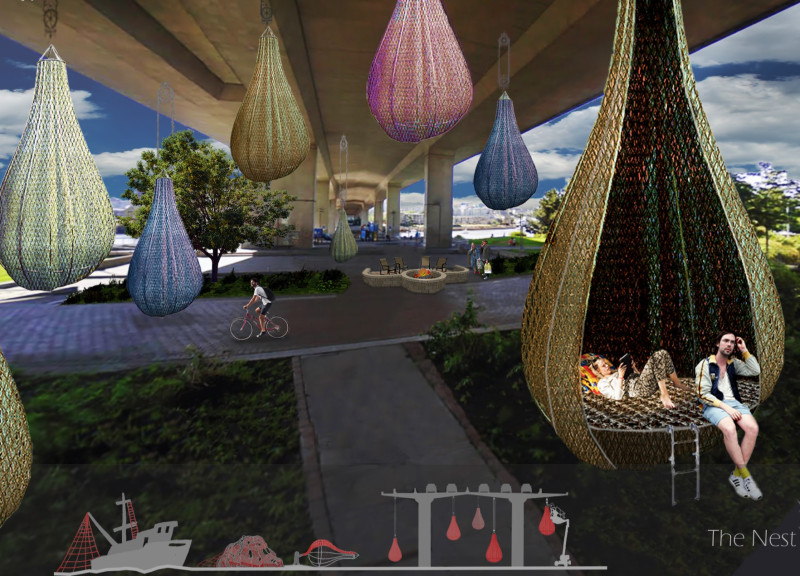5 key facts about this project
The Nest is an initiative designed to address homelessness in Vancouver, where over 2000 individuals were identified as homeless in 2019. It presents a suspended pod system that offers secure spaces for resting and overnight stays. By focusing on urban infrastructure, specifically Cambie Bridge, the design blends practicality with the urgent need for shelter in a busy city.
Design Concept and Functionality
The project utilizes Cambie Bridge, which spans False Creek, as a foundation for the living pods. By transforming this existing structure, The Nest creates spaces that provide both shelter and vital services like electricity, water, sewage, and gas. This integration allows for a practical living environment, meeting the needs of individuals seeking refuge in a crowded urban landscape.
Structural Framework
The design features a tubular steel frame consisting of vertical members alongside two compression rings for lateral support. This framework produces a distinct teardrop shape, optimizing space while ensuring stability. The lower compression ring serves as the floor, and the upper ring adds to the safety and integrity of the overall structure.
Materiality and Sustainability
Sustainability is a significant focus in the design. Each pod is covered with recycled fishing and dredging nets that are woven tightly around the frame. This choice not only enhances durability but also provides protection against the elements. The flooring is made from recycled boat sheets, ensuring a comfortable living surface that aligns with eco-friendly principles.
Access and Usability
Entering the pods is straightforward. Each pod has two flaps that act as doorways, allowing residents to move in and out easily. A collapsible boat ladder attached to the frame provides additional safety during entry. Below the floor, a storage area allows for personal belongings, enhancing the functionality of the compact living space.
The pods are suspended from the bridge using a pulley-block tackle system, which enables adjustments in height. This feature emphasizes safety and gives residents control over their living environment. Overall, the design reflects a thoughtful response to the challenges of homelessness, blending essential services and community needs with the existing urban scenery.



















































